Internet Explorer: From a Fallen Empire to a Meme Icon
After nearly 27 years, Microsoft officially retired Internet Explorer in 2022, a web browser that, in its later years, became the subject of numerous internet memes mocking its sluggish speed. Internet Explorer had a long and tumultuous journey, but it was once a symbol of Microsoft’s technological achievements.
Instead of focusing on web standards, Microsoft built proprietary technologies like VBScript and JScript, an alternative to JavaScript. The goal wasn’t to create a more open and better web for everyone but to dominate the web in the same way the company had dominated computer software.
For a while, this plan worked. Microsoft was even sued for monopolistic practices when it bundled Internet Explorer with Windows. This allowed Microsoft to dominate the web browser market, even though its competitor at the time, Netscape, was superior in many ways.
In 2003, Internet Explorer held 95% of the market share, but everything changed with the launch of Mozilla Firefox in 2004 and Google Chrome in 2008.
Bundling software with an operating system is a great way to get people to use that software. However, this was one of the rare instances where the outcome was completely opposite of what people thought. Internet Explorer eventually became known as a browser used to download Google Chrome because when someone set up a new PC, the first thing they would do was open IE, install Chrome, and never touch that blue "E" icon again.
Internet Explorer 1
Internet Explorer was the creation of developer Thomas Reardon and was released as part of Microsoft Plus! for Windows 95, a $49.99 software package that included the "Internet Jumpstart Kit," the Space Cadet Pinball game, and utilities like DriveSpace 3 and Compression Agent. The development team consisted of just six people, which is not surprising given that the web was still a novelty at the time. Microsoft Internet Explorer debuted on August 16, 1995.
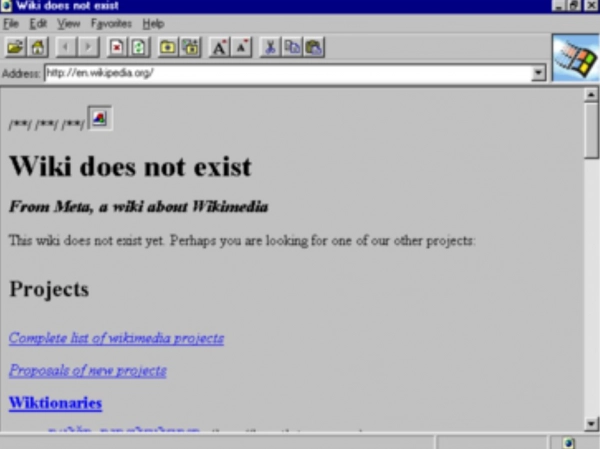
Shortly thereafter, Internet Explorer 1.5 was released, adding support for table rendering. This was also when Microsoft began bundling it with Windows NT.
Internet Explorer 2
Things progressed quickly with IE, as Internet Explorer 2 was released on November 22, 1995. In fact, a beta version of IE 2 was released in October, just months after IE1 launched. A few notable things happened here. While the initial version was only available for Windows 95 and later Windows NT, Internet Explorer 2 added support for older Windows 3.1 and Macintosh System 7.0.1.
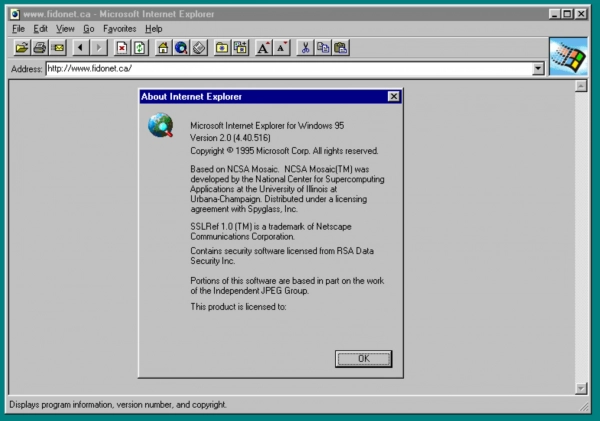
Several key features were introduced that we still see on the web today, such as support for JavaScript, HTTP cookies, SSL, and more. It was upgraded to support HTML3, and users could import bookmarks from Netscape.
Internet Explorer 2.1 was released for Mac in April 1996, featuring support for embedding AVI, QuickTime, AIFF, MIDI, and WAV files into webpages.
Internet Explorer 3
On August 13, 1996, Internet Explorer 3 was released. While Internet Explorer 2 was the first version supported on Mac, this was the first to be bundled with Macs, included with Mac OS 8.
At this point, IE was still trying to catch up to Netscape, and the competition between the two began to heat up. One notable addition to IE3 was support for CSS, or Cascading Style Sheets. There was also support for ActiveX and Frames, things you rarely hear about anymore.
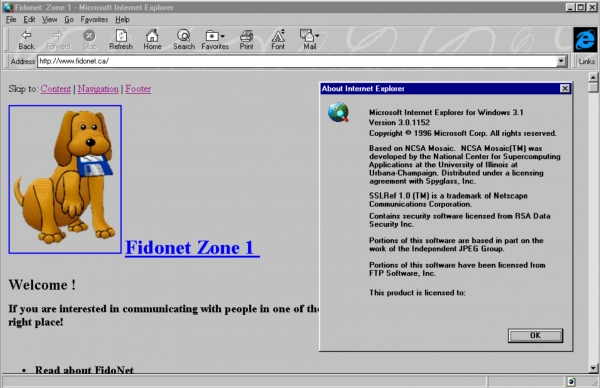
This was also when Microsoft introduced JScript, its version of JavaScript, with nearly identical syntax.
It also came with a lot of bundled software. IE3 included Internet Mail and News, Windows Address Book, Microsoft Comic Chat, RealPlayer, NetMeeting, and Windows Media Player. Clearly, most of those no longer exist.
Internet Explorer 4
Launched in September 1997 for Windows, January 1998 for Mac, and March 1998 for Unix, Internet Explorer 4 marked the point where the so-called "browser wars" really began to heat up. Today, it's almost unimaginable for an operating system not to have a web browser. After all, all our software is downloaded. But in 1998, no one had the super-fast download speeds we enjoy today. With dial-up internet back then, you could forget about streaming videos or downloading software.

Sure, users could download software from some websites, but it would take a long time. Back then, there were browsers competing with IE, but having a web browser pre-installed with Windows 98 meant people would use it out of convenience.
The company strongly encouraged PC manufacturers to help develop Internet Explorer and actively tried to prevent them from pre-installing rival browsers like Netscape, even going so far as to prevent them from displaying other browser icons on the desktop.
This is when the U.S. Department of Justice stepped in. By the end of 1999, the agency found that Microsoft was operating as a monopoly. The following year, a court ordered Microsoft to be split into two companies: one making Windows and another making software. Microsoft appealed, and by 2001, the company was no longer required to split.
Returning to Internet Explorer 4, the browser added support for Active Desktop, allowing HTML content to be added to the desktop. At that time, Microsoft was thinking about using HTML everywhere. It was packaged with Microsoft Chat 2.0, Outlook Express, NetMeeting, FrontPage Express 2.0, and RealPlayer.
This was also when the Trident engine debuted, which remained the browser engine for the rest of IE's lifespan.
Internet Explorer 5
Microsoft Internet Explorer 5 launched on March 18, 1999. Because of the many new features in Internet Explorer 4, such as support for HTML4, IE5 had to address some issues, such as improving support for CSS2. However, there were still new features, such as AutoComplete, Hotmail integration, the ability to save pages as MHTML, the History Explorer Bar, and the Search Explorer Bar.
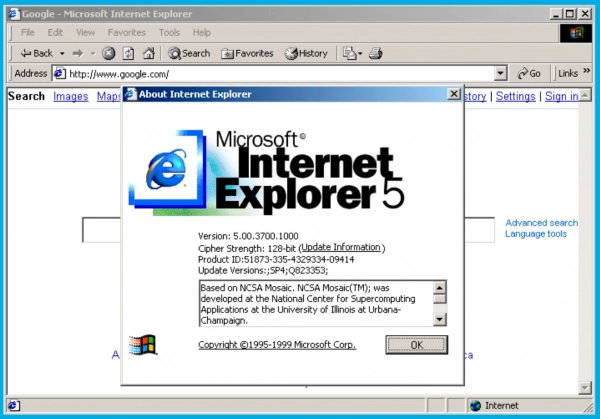
On Windows, IE5 required a minimum of an Intel 486DX processor along with 37MB of RAM. For Mac, a PowerPC processor and 8MB of RAM were needed.
Internet Explorer 6
Internet Explorer 6 was released on August 24, 2001, marking the first time there wasn't an IE release for an entire year (2000). It was also the first version not available for Mac. Microsoft's deal with Apple had expired, and Apple had moved on with its Safari browser.
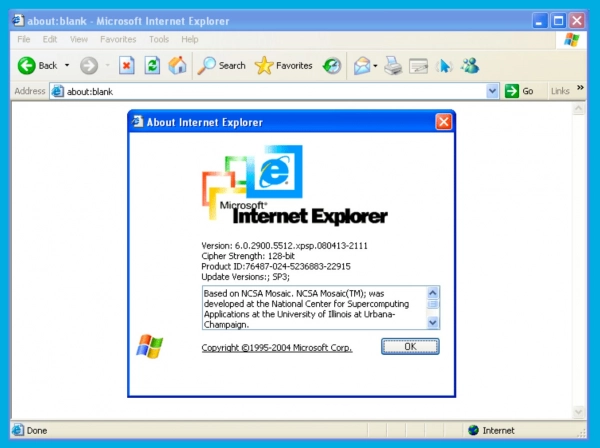
IE6 was redesigned because it was released just before Windows XP. As we know, Windows XP had an entirely new interface called Luna, which led to software changing its appearance as well. There were also improvements to dynamic HTML and CSS.
This era marked the peak of Internet Explorer, with a 90% usage share, and all versions of IE combined reached 95%. By this time, Netscape had been acquired by AOL, but Netscape-branded browsers continued until 2008.
IE6 was the last version of the browser available as a standalone download from Windows. After that, Internet Explorer would only be bundled with Windows, simplifying the upgrade process for users.
Internet Explorer 7
Internet Explorer 7 was released on October 18, 2006, and Internet Explorer 6 remained the most popular version of IE for another year after that. This release was significant because it was the first to introduce tabbed browsing. Today, it's hard to imagine a web browser without tabs. Another important new feature was RSS support. The first operating system to come with this feature pre-installed was Windows Vista.
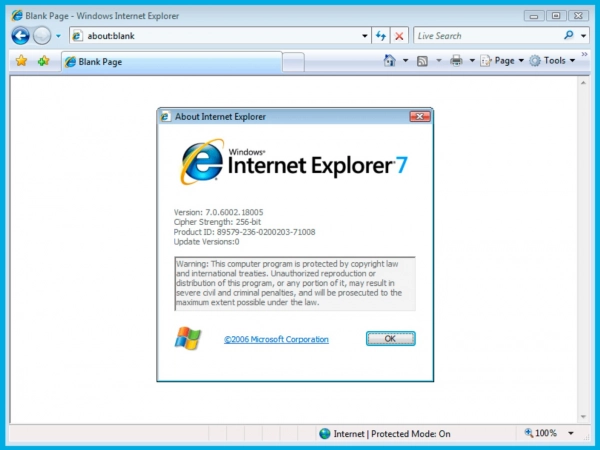
The browser also added support for pixel transparency in PNG files. Additionally, it introduced the Phishing Filter, which essentially checked the websites you visited against a list of known phishing sites. It wasn't perfect, but it was a step forward in browser security, one of the areas where Microsoft excelled. Another security feature was that ActiveX controls now needed to be allowed before they could run, and JavaScript couldn't run on blank pages.
Internet Explorer 8
IE8 launched on March 19, 2009, and was pre-installed on Windows 7 when the operating system was released later that year, but it still supported Windows XP, the "immortal" OS that persisted until 2014.
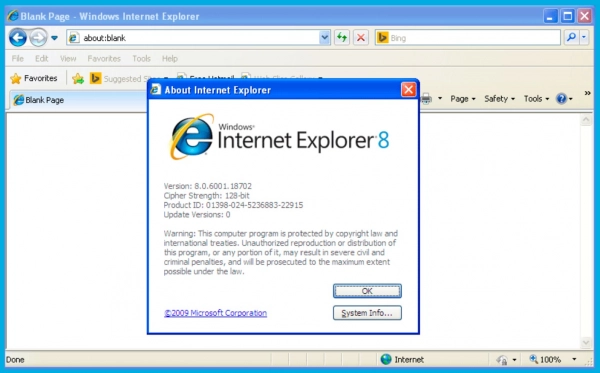
This was the first version of Internet Explorer to feature InPrivate browsing. Essentially, when you use InPrivate mode, your activities aren't saved in the browser history. This feature is common today, and the InPrivate brand still exists.
Developer tools debuted with IE8, allowing developers to debug web pages from within the browser.
Internet Explorer 9
Unlike the three most recent predecessors and the three subsequent versions, the release of Internet Explorer 9 did not coincide with a new Windows version. This version launched on March 14, 2011, supporting Windows Vista SP2, Windows 7, and Windows Phone 7.5.
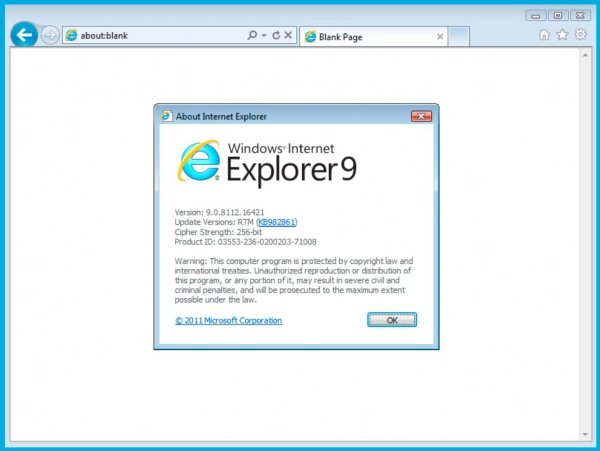
The most notable feature was support for HTML5 and CSS3, which are the building blocks of the modern web. While HTML5 was introduced 13 years ago, it is still in use today.
Internet Explorer 10
IE10 was released on September 4, 2012, alongside Windows 8. It also coincided with the launch of the Surface PC line, including the Surface RT and Surface Pro. While users could download IE10 on Windows 7, the biggest change with Internet Explorer 10 was that it had two separate builds in Windows 8. There was the traditional Internet Explorer and a new Metro app.
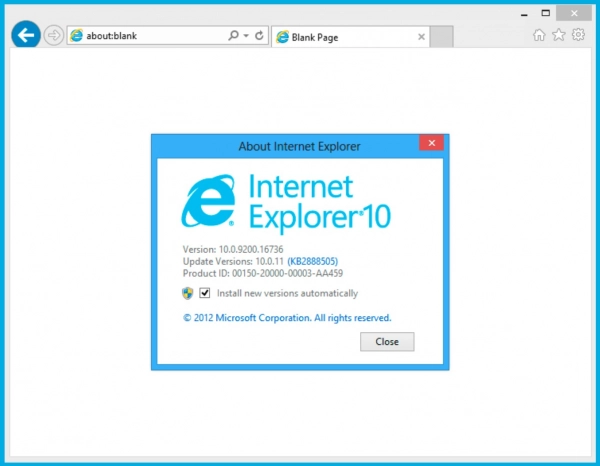
Metro was the new design language for Windows 8, but let's discuss Windows 8 to better understand what Metro was. Microsoft removed the Start Menu, the way users had navigated PCs since Windows 95, and replaced it with the Start Screen, which featured live tiles.
If you launched a traditional Win32 application, it would open on the desktop and work as expected. But when launching a Metro app, typically from the Windows Store, it would open full-screen, and you'd have to manage it with gestures. There was no longer an X to close Metro apps; users needed to know how to drag the app down from the top of the screen.
Moreover, you couldn't access Metro apps from the desktop. These two interfaces were completely separate, leading to user frustration. But Microsoft had witnessed the revolution of Apple with the iPhone and later the iPad. They knew that touch was the future; they just took the wrong approach.
Metro Internet Explorer was the browser that would launch if you opened it from the Start Screen. If you opened it from the desktop interface, you would get the traditional Internet Explorer. It all sounds bizarre, but that wasn't even the worst part. If you changed your default browser, you would never see Metro Internet Explorer again. Even if you opened it from the Start Screen, it would open the traditional IE instead—quite strange.
IE10 was also the first browser to have Adobe Flash integrated instead of requiring users to install a plugin. This was also the last browser to use the "Windows Internet Explorer" branding that Microsoft had been using since IE7. Starting with IE11, it was simply called Internet Explorer.
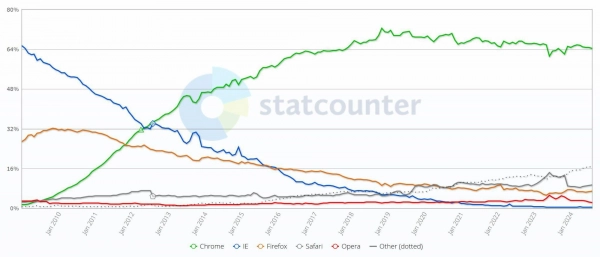
According to data from StatCounter, 2012 was also the point where IE lost market share to Chrome and never recovered from it. However, the decline had started as early as 2009, meaning that just one year after Chrome's launch, IE's market share had begun to plummet, and users started using it mainly to download Chrome.
Internet Explorer 11
Internet Explorer 11 launched on October 17, 2013, and was included with Windows 8.1. By this point, it was still two separate applications. However, Windows had changed significantly. The effort in Windows 8.1 was to fix the shortcomings of Windows 8, so the familiar X to close Metro apps was reintroduced, the Start button was added back but only to return to the Start Screen, and Metro apps could be accessed from the desktop.
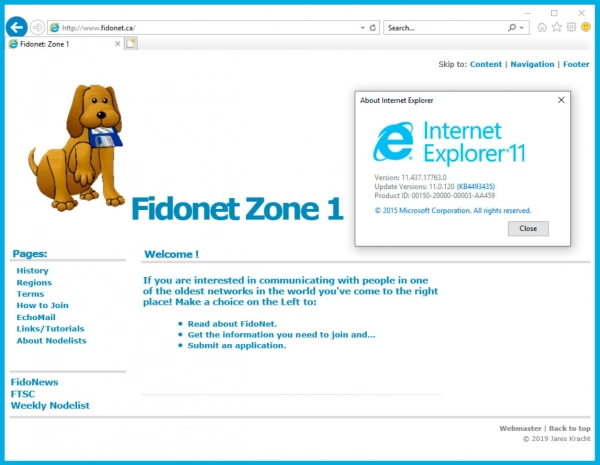
Most of the new features in IE11 were improvements, and a major one was better support for high-DPI displays. High-resolution screens were still relatively new at this time, and Windows took a while to catch up.
Microsoft Edge - Spartan
At the second Windows 10 event, Microsoft announced Project Spartan, the company's next-generation web browser. Project Spartan featured some innovative capabilities, such as the ability to bookmark web pages using a stylus and save them. It also integrated Cortana and included a new reading mode, promising faster performance.
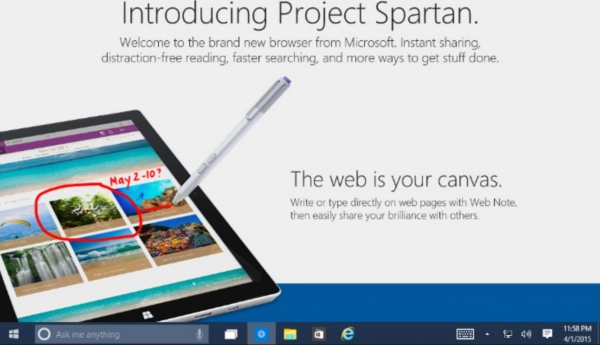
Microsoft Edge was officially launched on July 29, 2015, as part of Windows 10. Windows 10 itself marked a significant shift in how Windows was developed and distributed. After the disaster of 2014, when Microsoft faced significant challenges in phasing out Windows XP, the company realized that it was primarily competing with itself.
Windows 10 was announced as a free upgrade for all devices running Windows 7, Windows 8.1, and Windows Phone 8.1, although, in the end, only a small subset of Windows Phones was upgraded, but that’s another story. With Windows 10, updates would be free for the device’s lifetime.
The core idea behind this strategy was that Windows would no longer compete against itself. For this reason, Edge became the first new Microsoft browser not to be backward compatible with older versions of Windows. It was exclusive to Windows 10.
When Project Spartan became Microsoft Edge, the logo remained a blue "E" but was redesigned. Edge could easily have been called Internet Explorer 12, but rebranding was necessary because the IE name had become too outdated over the years and had gained the reputation of being the "browser to download Chrome." The concept behind the new icon was to look different, yet familiar enough for users accustomed to clicking the blue "E" to access the internet.
Microsoft Edge - Anaheim
Edge did not achieve the success Microsoft had hoped for. It turned out that people weren't using the new features, and honestly, the web world at that point was built for Chrome. Instead of trying to beat Google, the company decided to join them. In December 2018, Microsoft announced its intention to rebuild Edge using Google's open-source Chromium engine, and the public preview was launched shortly after. The browser was nearly officially released on January 15, 2020, although it lacked many key features, such as Arm64 support, history sync, and extension sync.

Codenamed Anaheim, Edge Chromium also marked Microsoft’s return to creating a cross-platform browser. First came the return to Mac, then to Linux, along with versions for older Windows. The new Edge also addressed a major issue. Because it was independent of the operating system, it could be updated more frequently. With the old Edge (Legacy), it required a Windows feature update, meaning updates were roughly every six months, whereas Chrome received updates every six weeks or so.
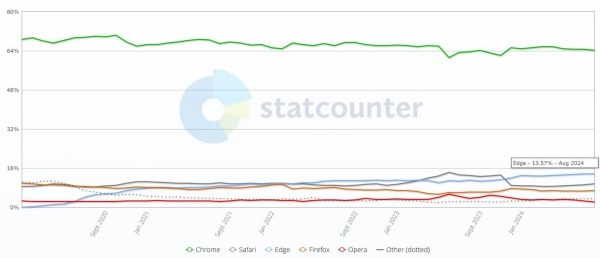
Windows 11 is the latest version of Windows, and Edge is gradually asserting its place in the browser market. It has become the second most popular desktop browser worldwide, second only to Chrome, and no one can call Edge the "tool to download Chrome" anymore, as it has surpassed both Firefox and Safari to gain a solid user base.
Whether Edge can dethrone Chrome and regain the former glory of IE remains an open question, as the gap between the two is still significant, but at least Edge is being embraced by users because it is a very good browser in its own right.
Submit feedback
Your email address will not be made public. Fields marked are required *
Search
Trend
-
What is Black Myth: Wukong? Detailed Guide on System Requirements and Gameplay
08-21-2024 . 1k view
-
The simplest and fastest way to log into the Chinese TikTok, Douyin.
01-10-2022 . 1k view
-
Blog sites that will accept AI generated content
07-26-2024 . 1k view
-
Call of Duty: Black Ops 6 - Intense, Mysterious, and Surprising Warfare
09-02-2024 . 1k view
-
The "End of Life" for Windows 10: A Massive E-Waste Threat and Sustainable Solutions
08-18-2024 . 970 view






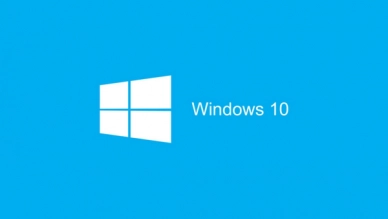
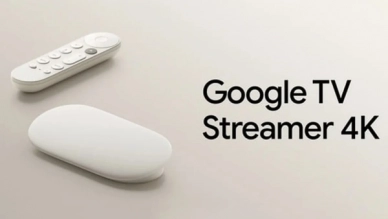

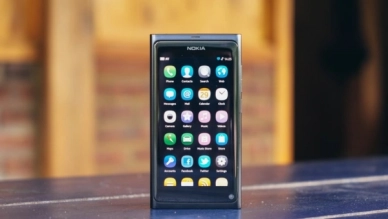
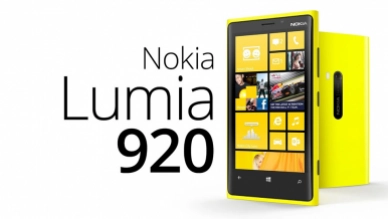
0 feedback